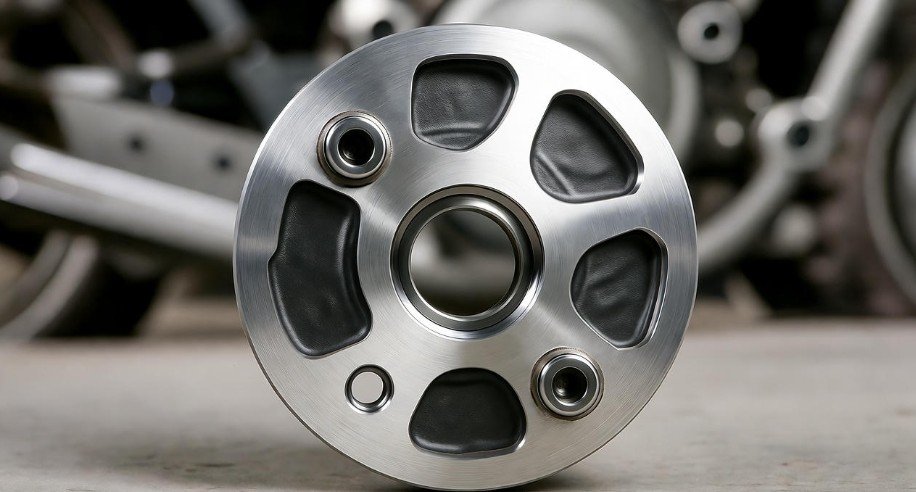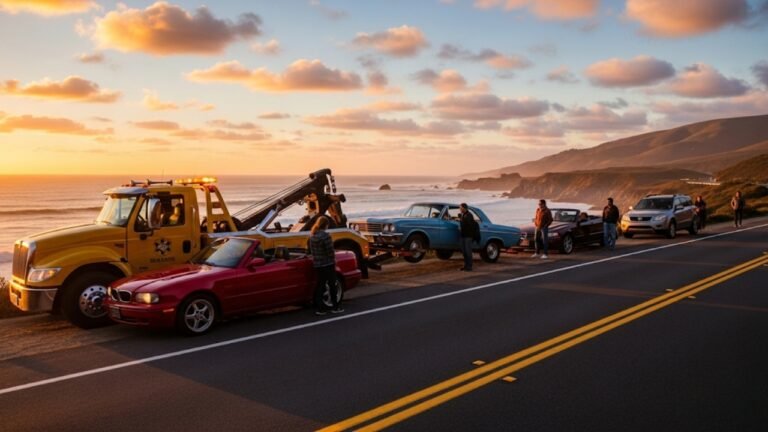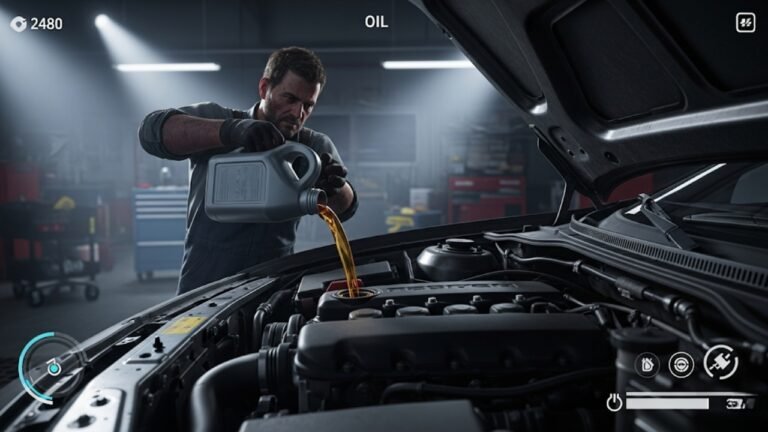Pulsar 150 Disc Brake Piston Price

The Pulsar 150 disc brake piston price typically ranges from $10 to $30 for the piston itself, with a complete caliper assembly costing between $40 and $100. Prices vary based on brand, quality, and region, and professional installation can add an additional $50 to $150.
Key Takeaways
- Understand Pulsar 150 disc brake piston cost factors.
- Explore genuine vs. aftermarket piston options.
- Learn about installation expenses and DIY feasibility.
- Discover where to buy Pulsar 150 brake parts.
- Recognize signs of a failing brake piston.
- Budget for complete brake system maintenance.
When you own a Pulsar 150, keeping it in top condition is key to enjoying every ride. One crucial component of your bike’s safety system is the disc brake. Specifically, the brake piston plays a vital role in making sure your brakes engage effectively. If you’ve noticed a change in your braking performance, or if you’re performing routine maintenance, understanding the Pulsar 150 disc brake piston price is important. It can seem a bit confusing with all the different options available, but don’t worry. We’re here to break it down for you with a clear, step-by-step guide. Let’s dive into what influences the cost and what you can expect when you need to replace this essential part.
Understanding Your Pulsar 150’s Braking System
Your Bajaj Pulsar 150, like many modern motorcycles, relies on a hydraulic disc braking system for reliable stopping power. This system is designed for performance and safety, and it’s made up of several key components. At the heart of the disc brake caliper are the brake pistons. When you squeeze the brake lever, hydraulic fluid is forced into the caliper, pushing these pistons outwards. These pistons then press the brake pads against the brake disc (rotor), creating friction that slows or stops the wheel.
The brake piston is a small but mighty component. It’s typically made of durable metal to withstand the high pressures and temperatures involved in braking. While generally very reliable, these pistons can sometimes wear out or get damaged due to corrosion, debris, or simply age. If a piston seizes, leaks, or becomes corroded, it can lead to diminished braking performance, uneven braking, or even brake failure. This is why knowing the Pulsar 150 disc brake piston price and when to replace it is crucial for your safety.
Factors Affecting Pulsar 150 Disc Brake Piston Price
The cost of a Pulsar 150 disc brake piston isn’t a fixed number. Several factors can influence how much you’ll end up paying. Understanding these can help you make an informed decision and find the best value for your needs.
Brand and Quality
Just like with tires or engine oil, there are different brands offering brake components. You’ll find options ranging from genuine Bajaj spare parts to reputable aftermarket manufacturers, and generic unbranded parts.
- Genuine Bajaj Parts: These are made by or for Bajaj and are designed to meet the original specifications of your Pulsar 150. They often come with a higher price tag but guarantee perfect fitment and quality.
- Aftermarket Brands: Many established aftermarket companies produce brake components that are compatible with the Pulsar 150. These can offer a good balance of quality and affordability. Brands known for quality brake parts might cost more than lesser-known ones.
- Generic Parts: These are usually the cheapest option. While they might work, their quality, durability, and exact fitment can be inconsistent. For critical safety components like brake pistons, it’s often wise to avoid the absolute cheapest options.
Material and Design
Brake pistons are typically made from steel, aluminum, or sometimes even brass. Each material has its own properties regarding durability, weight, and resistance to corrosion. Aluminum pistons, for instance, are lighter, which can contribute to slightly better performance, but steel pistons might be more robust in certain conditions. The design and precision engineering also play a role in cost. Pistons made with tighter tolerances and superior surface finishing tend to be more expensive.
New vs. Reconditioned
While less common for individual pistons, sometimes entire brake caliper assemblies might be available as reconditioned units. These are pre-owned parts that have been inspected, cleaned, and repaired. They are typically cheaper than new parts but come with a shorter warranty or no warranty at all. For brake pistons, it’s generally recommended to opt for new parts for maximum reliability.
Location and Retailer
Where you buy your parts can also influence the price. Prices can vary between authorized Bajaj dealerships, independent motorcycle repair shops, and online retailers. Online stores often have competitive pricing due to lower overheads, but you might have to wait for shipping. Local shops might offer immediate availability and the convenience of picking up the part yourself.
Pulsar 150 Variant and Year
While many Pulsar 150 models share similar braking systems, very minor variations might exist between different model years or specific variants (e.g., single disc vs. dual disc setups, if applicable). Ensure the piston you order is specifically for your Pulsar 150’s exact model year and configuration.
Pulsar 150 Disc Brake Piston Price Range
When looking at the Pulsar 150 disc brake piston price, it’s important to differentiate between just the piston and a complete caliper assembly. Often, when one piston is damaged, it’s part of a caliper that might require more extensive service or replacement.
Individual Brake Piston Cost
If you only need to replace a single brake piston, the cost is generally quite low.
- Aftermarket/Generic Piston: Expect to pay anywhere from $10 to $25 for a single piston.
- Genuine Bajaj Piston: A genuine Bajaj piston might cost slightly more, perhaps in the range of $20 to $35.
It’s important to note that simply replacing a piston might not be enough if the caliper bore is damaged or corroded. In such cases, you might need a caliper repair kit, which includes seals and sometimes a new piston. A basic brake caliper repair kit for the Pulsar 150 typically costs between $15 and $40.
Complete Brake Caliper Assembly Price
If the caliper itself is damaged, corroded beyond repair, or if you prefer to replace the entire unit, the price increases significantly.
- Aftermarket Caliper Assembly: These can range from $40 to $80.
- Genuine Bajaj Caliper Assembly: A complete genuine caliper assembly will likely cost between $70 and $120.
These prices are for the caliper unit only and do not include brake pads, brake lines, or the master cylinder. It’s always a good idea to inspect all related components when replacing a caliper.
Where to Buy Pulsar 150 Disc Brake Parts
Finding the right parts for your Pulsar 150 is essential. Here are the most common places to look for disc brake pistons and related components:
- Authorized Bajaj Dealerships: This is your best bet for guaranteed genuine parts. The staff can help you identify the exact part number for your specific motorcycle model.
- Reputable Online Auto Parts Stores: Websites like Amazon, eBay, or specialized motorcycle parts retailers often have a wide selection from various brands. Ensure you are buying from a trusted seller and check customer reviews. Use search terms like “Bajaj Pulsar 150 brake caliper piston” or “Pulsar 150 front brake piston.”
- Local Motorcycle Repair Shops or Parts Stores: Many independent shops stock common wear-and-tear parts or can order them for you. They can also offer expert advice on the best options for your bike.
- Specialty Motorcycle Forums and Communities: Sometimes, fellow enthusiasts can recommend reliable suppliers or even have used parts available. Always exercise caution when dealing with private sellers.
When purchasing online, always double-check the part number and compatibility with your Pulsar 150’s year and model. Many online stores have fitment guides to help you confirm.
DIY vs. Professional Installation Costs
The Pulsar 150 disc brake piston price you pay for the part is only one part of the equation. You also need to consider the cost of installation.
DIY Installation
If you are mechanically inclined and have the right tools, replacing a brake piston or caliper can be a manageable DIY project. The primary cost here is the part itself. However, you’ll need to factor in tools like a socket set, wrenches, brake cleaner, and potentially a brake bleeding kit. Performing your own maintenance can save a significant amount on labor costs.
Things to Consider for DIY:
- Brake Bleeding: After replacing a piston or caliper, you MUST properly bleed the brake system to remove air. Air in the lines will make your brakes spongy and ineffective.
- Torque Specs: Ensure all bolts are tightened to the manufacturer’s specified torque.
- Cleanliness: Brake systems are precision components. Contamination with dirt or debris can cause damage.
For a comprehensive guide on brake bleeding, you can refer to resources like the National Highway Traffic Safety Administration (NHTSA) on braking systems, which provides general safety information.
Professional Installation Costs
If you’re not comfortable performing the work yourself, a professional mechanic will handle it. The labor costs can vary depending on your location and the shop’s rates.
- Labor Estimate: For replacing a brake caliper piston or the entire caliper, you can expect labor charges to range from $50 to $150. This typically includes the time to remove the old part, install the new one, bleed the brakes, and test functionality.
- Additional Services: The mechanic might also recommend replacing brake fluid or inspecting the brake pads and rotor. These would incur additional costs.
It’s always a good practice to get a quote from a few different reputable motorcycle shops before committing to a service. Ensure they are experienced with Bajaj motorcycles.
When to Replace Your Pulsar 150 Brake Piston
Knowing when to address your brake system is crucial for safety. Here are the common signs that indicate your Pulsar 150 disc brake piston may need attention:
| Symptom | Explanation | Related Component |
|---|---|---|
| Spongy or Soft Brake Lever | The brake lever feels mushy and travels too far before engaging. This can be due to air in the lines or a leaking piston seal. | Piston Seal, Caliper Bore, Brake Fluid |
| Brake Dragging | The wheel feels hard to turn even when the brake lever is not applied. A seized piston won’t retract properly. | Piston, Caliper Bore, Brake Pads |
| Uneven Braking | One brake feels stronger than the other, or the bike pulls to one side when braking. This could be a sticking piston on one side. | Pistons (all), Caliper, Brake Pads |
| Brake Fluid Leaks | Visible fluid around the caliper or on the wheel can indicate a damaged piston seal or a crack in the piston itself. | Piston Seal, Piston, Caliper |
| Corrosion or Pitting | Visual inspection might reveal rust, corrosion, or pitting on the surface of the piston. This can damage seals and cause sticking. | Piston, Caliper Bore |
| Reduced Braking Performance | The bike takes longer to stop than it used to. This is a general symptom that could point to worn pads, low fluid, or a faulty piston. | All Brake Components |
Regular inspection of your bike’s braking system, along with paying attention to these signs, will help you maintain safety on the road.
Pro Tips
Always use the correct type of brake fluid recommended for your Pulsar 150 (usually DOT 3 or DOT 4). Mixing different types can damage the system.
Maintaining Your Entire Brake System
Replacing a brake piston is often part of a broader brake system maintenance strategy. To ensure optimal performance and longevity, consider these aspects:
- Brake Fluid Flushes: Brake fluid absorbs moisture over time, which lowers its boiling point and can cause corrosion. It’s recommended to flush and replace your brake fluid every 1-2 years, depending on riding conditions.
- Brake Pad Replacement: Worn brake pads reduce stopping power and can damage the brake disc if worn down to the metal backing. Replace them when they reach the wear indicators.
- Brake Disc Inspection: Check your brake discs for warping, scoring, or excessive wear. A damaged disc can compromise braking performance and wear out new pads prematurely.
- Brake Line Integrity: Ensure your brake lines are not cracked, kinked, or bulging. Old rubber lines can degrade over time and should be replaced with braided stainless steel lines for improved feel and durability.
A well-maintained braking system is one of the most critical aspects of motorcycle safety. Budgeting for these regular maintenance tasks will prevent more costly repairs down the line. For more on motorcycle maintenance best practices, the U.S. Department of Energy’s FuelEconomy.gov offers general tips on vehicle maintenance for optimal performance and longevity.
Frequently Asked Questions (FAQ)
Q1: How much does a Pulsar 150 disc brake piston usually cost?
The Pulsar 150 disc brake piston price for a single piston typically ranges from $10 to $35, depending on whether it’s an aftermarket or genuine Bajaj part. A complete caliper assembly will cost more, usually between $40 and $120.
Q2: Can I replace a brake piston myself?
Yes, if you have mechanical experience and the right tools, you can replace a brake piston. However, it’s crucial to bleed the brakes properly afterward. If you’re unsure, professional installation is recommended.
Q3: What’s the difference between a genuine Bajaj piston and an aftermarket one?
Genuine Bajaj parts are made to the manufacturer’s exact specifications for your Pulsar 150, ensuring a perfect fit and quality. Aftermarket parts are made by other companies and can vary in quality and precision, though reputable brands offer good alternatives at potentially lower prices.
Q4: How do I know if my brake piston needs replacing?
Signs include a spongy brake lever, the brake dragging, uneven braking, visible fluid leaks around the caliper, or noticeable corrosion on the piston itself.
Q5: Do I need to replace the entire brake caliper if one piston is bad?
Not always. If the caliper bore is not damaged or excessively corroded, you can often replace just the faulty piston and its seal, or purchase a caliper repair kit. However, if the caliper is severely damaged or corroded, replacing the entire assembly is usually the safer and more reliable option.
Q6: How often should I service my Pulsar 150’s brakes?
It’s recommended to inspect your brakes at every regular service interval (typically every few thousand miles or once a year). Brake fluid should be flushed and replaced every 1-2 years to maintain optimal performance and prevent internal corrosion.
Q7: Where can I find the best price for a Pulsar 150 disc brake piston?
Prices can vary. Compare options from authorized Bajaj dealers, reputable online motorcycle parts retailers, and local independent repair shops. Online stores often offer competitive pricing.
Conclusion
Maintaining your Pulsar 150’s braking system is paramount for your safety and riding confidence. Understanding the Pulsar 150 disc brake piston price, along with associated costs for installation and other maintenance, empowers you to make informed decisions. Whether you opt for genuine Bajaj parts or quality aftermarket components, remember that your brakes are a critical safety feature. By being aware of the factors influencing cost, knowing when to seek replacement, and considering the option of professional installation, you can ensure your Pulsar 150 stops reliably every time. Regular checks and proactive maintenance will not only keep your bike performing at its best but also provide peace of mind on every journey.





